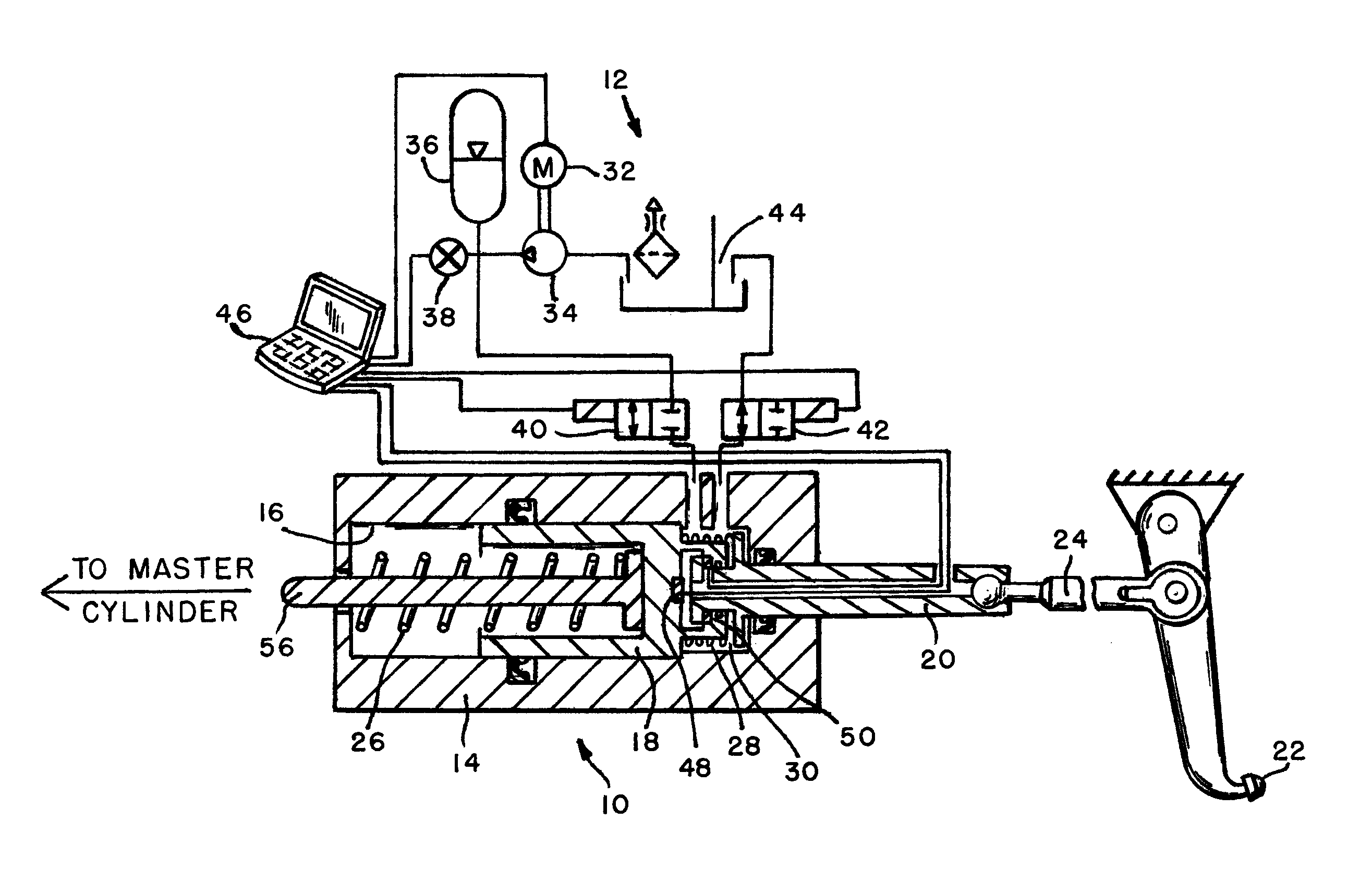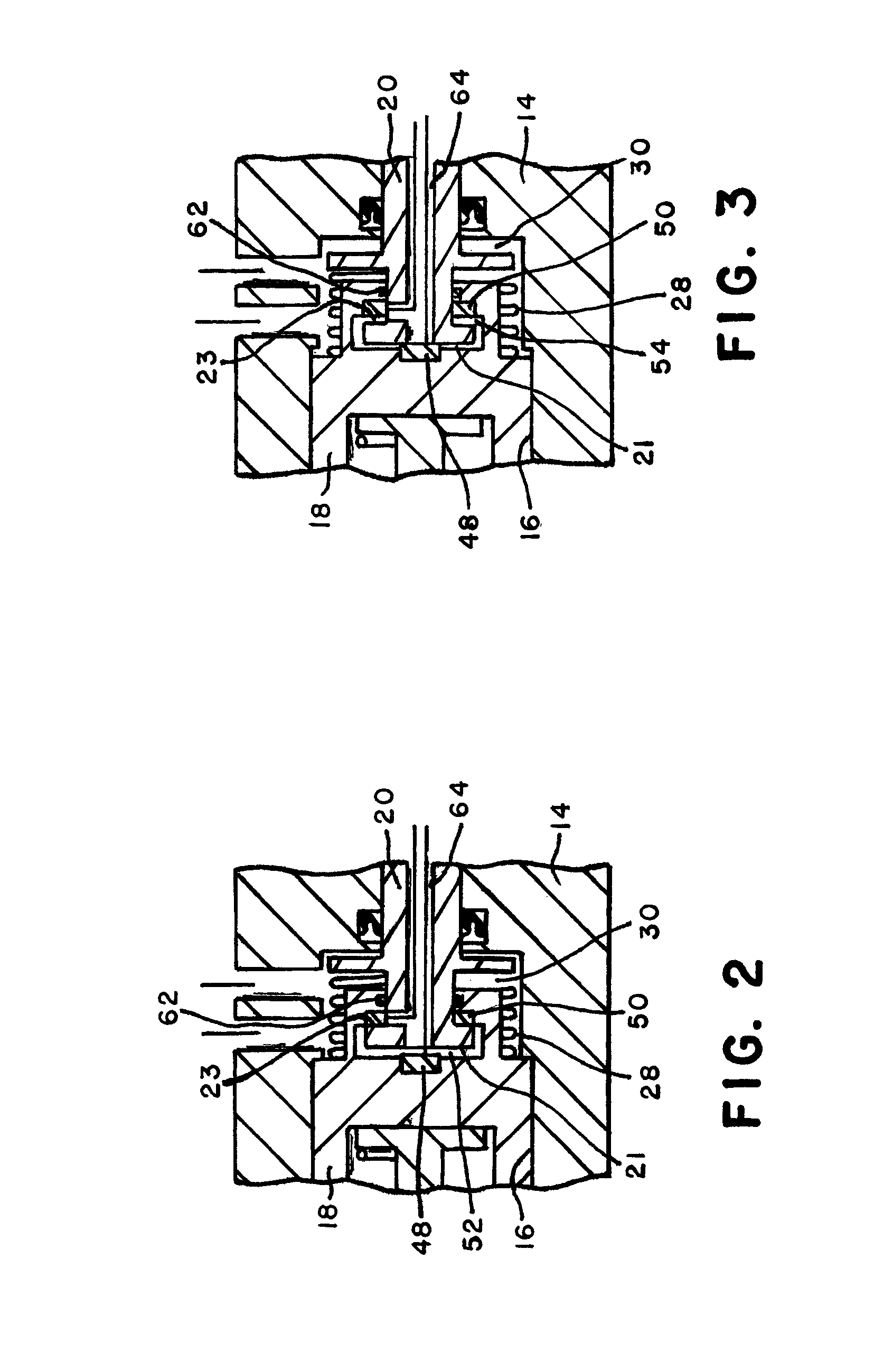Hydraulic brake booster
- Summary
- Abstract
- Description
- Claims
- Application Information
AI Technical Summary
Benefits of technology
Problems solved by technology
Method used
Image
Examples
Embodiment Construction
[0020]Referring now to the drawings and particularly to FIG. 1, there is shown a hydraulic power boost unit 10 and a boost fluid pressure source such as energy unit 12. The boost unit or booster 10 includes a housing 14 having a cylindrical bore 16 with a boost piston 18 reciprocably disposed therein. An input member or rod 20 is coupled to an operator brake pedal 22 by a linkage 24 and is responsive to an operator pedal input to supply pressure fluid to individual wheel brake actuators such as illustrated in FIGS. 4 and 5. In an event that the boost unit 12 is inoperative, input member 20 moves piston 18 within bore 16 to provide an output member 56 with a force that is transmitted to a conventional master cylinder in much the same way as a vacuum failure mode in a brake system having a conventional vacuum booster. The cylindrical bore 16 retains a boost piston return spring 26, a cut in spring 28, and in conjunction with piston 18. Piston 18 is positioned within bore 16 to define ...
PUM
 Login to View More
Login to View More Abstract
Description
Claims
Application Information
 Login to View More
Login to View More - R&D
- Intellectual Property
- Life Sciences
- Materials
- Tech Scout
- Unparalleled Data Quality
- Higher Quality Content
- 60% Fewer Hallucinations
Browse by: Latest US Patents, China's latest patents, Technical Efficacy Thesaurus, Application Domain, Technology Topic, Popular Technical Reports.
© 2025 PatSnap. All rights reserved.Legal|Privacy policy|Modern Slavery Act Transparency Statement|Sitemap|About US| Contact US: help@patsnap.com



